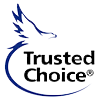Update your personal home inventory for renters insurance
Update your personal home inventory for renters insurance
Renters insurance provides an essential safety net for tenants, offering protection against unforeseen events such as theft, fire, natural disasters, or lawsuits! While obtaining a renters insurance policy is paramount, many renters undervalue the importance of updating their insurance coverage to protect their high-value items. But does one truly know how many possessions one has? As life evolves and possessions accumulate, neglecting to adjust one’s renters insurance policy can lead to potential gaps in coverage, if you need to file a claim.
Importance of a personal property inventory. Documenting and detailing everything an individual owns becomes crucial in the event of a fire, flood, or home invasion. By maintaining an inventory, renters (and homeowners and condo owners) can assess whether they have acquired sufficient coverage for their belongings and decide whether adjustments are necessary based on their inventory’s needs
Step by step: How to create a apersonal property inventory. Here is a four-step guide that anyone can use to create or update a personal property inventory:
Step 1: Gather necessary tools. Begin by getting all necessary supplies, such as an Excel or Google spreadsheet, a smartphone with a quality camera, and any receipts or bank statements showing purchases of items in your possession. Create a new digital folder, free up space on your digital cloud or Zip drive, and/or purchase a file storage organizer to maintain documents efficiently.
Step 2: Document your inventory. Pick a starting point in your home. This could be a room, closet, or a drawer. Pick an item, making sure to document what the item is, its color, size, brand, and any distinguishing patterns or features. Using one’s smartphone or camera, take well-lit photographs from varying angles. For larger or longer items, one can use a tape measure to measure the length or scale to weigh the items.
Step 3: Recordkeeping. Recordkeeping is another essential step in the process. If possible, include the date you bought each item, its original cost, and if you still have them, the receipts. Noting the current condition at the time of inventory, as well as the location within your home where the item is located is helpful information to know in the future in the event a claim is filed.
Step 4: Update your inventory regularly. Opting for an annual assessment or updating after significant purchases can ensure your inventory is updated. Keeping your inventory accurate involves noting any items you dispose, sell, or donate.
Moreover, one should ensure accuracy by periodically reviewing the inventory and adjusting item values, accounting for item depreciation, and price changes.








Leave a Reply
Want to join the discussion?Feel free to contribute!